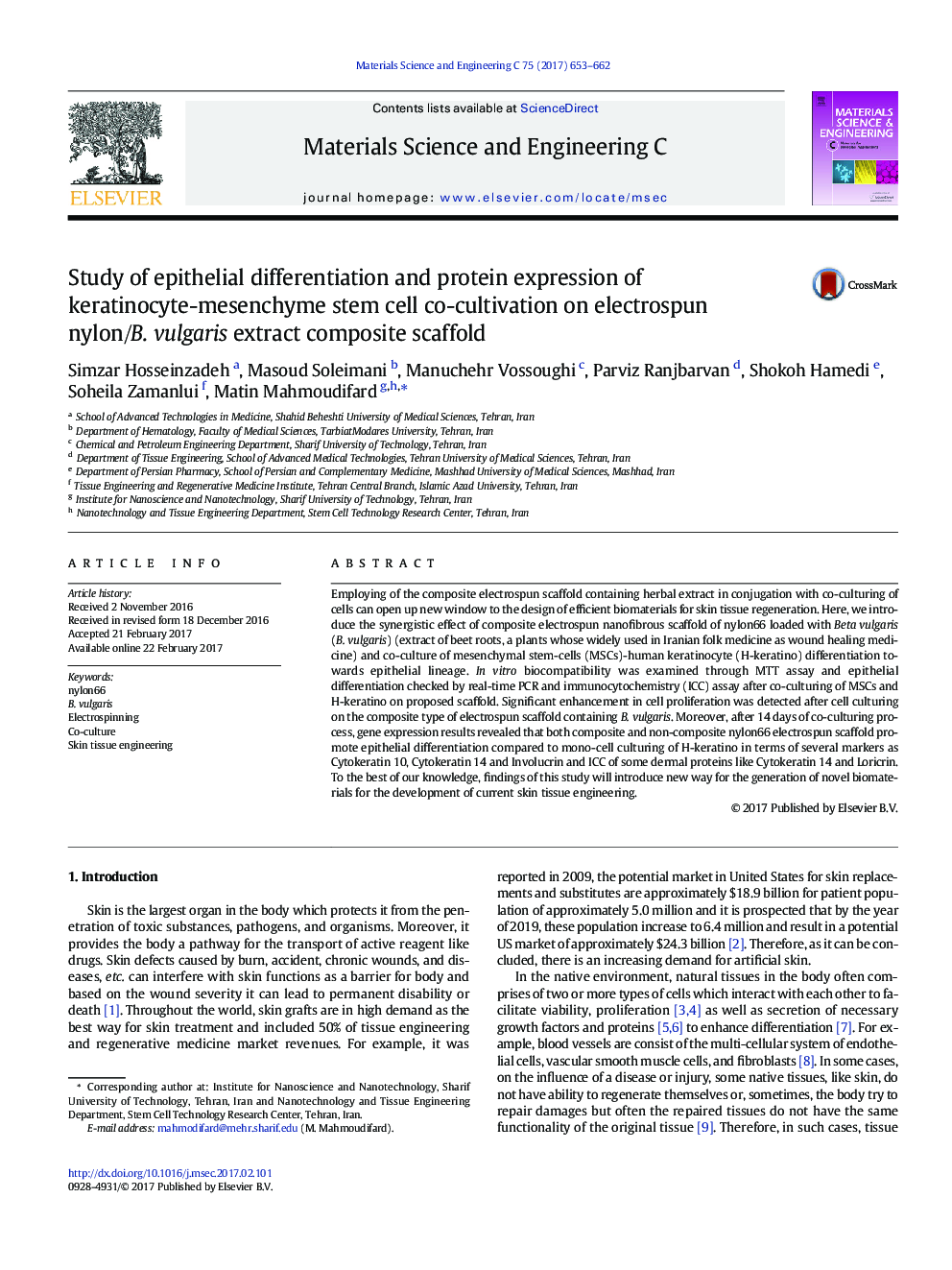| Article ID | Journal | Published Year | Pages | File Type |
|---|---|---|---|---|
| 5434868 | Materials Science and Engineering: C | 2017 | 10 Pages |
â¢New way for the generation of novel biomaterials for the development of current skin tissue engineering.â¢Fabrication of novel composite scaffold containing Beta vulgaris through electrospinningâ¢Synergistic effect was found on epithelial differentiation through co-culture of keratinocyte and MSC on proposed composite NFM
Employing of the composite electrospun scaffold containing herbal extract in conjugation with co-culturing of cells can open up new window to the design of efficient biomaterials for skin tissue regeneration. Here, we introduce the synergistic effect of composite electrospun nanofibrous scaffold of nylon66 loaded with Beta vulgaris (B. vulgaris) (extract of beet roots, a plants whose widely used in Iranian folk medicine as wound healing medicine) and co-culture of mesenchymal stem-cells (MSCs)-human keratinocyte (H-keratino) differentiation towards epithelial lineage. In vitro biocompatibility was examined through MTT assay and epithelial differentiation checked by real-time PCR and immunocytochemistry (ICC) assay after co-culturing of MSCs and H-keratino on proposed scaffold. Significant enhancement in cell proliferation was detected after cell culturing on the composite type of electrospun scaffold containing B. vulgaris. Moreover, after 14Â days of co-culturing process, gene expression results revealed that both composite and non-composite nylon66 electrospun scaffold promote epithelial differentiation compared to mono-cell culturing of H-keratino in terms of several markers as Cytokeratin 10, Cytokeratin 14 and Involucrin and ICC of some dermal proteins like Cytokeratin 14 and Loricrin. To the best of our knowledge, findings of this study will introduce new way for the generation of novel biomaterials for the development of current skin tissue engineering.
